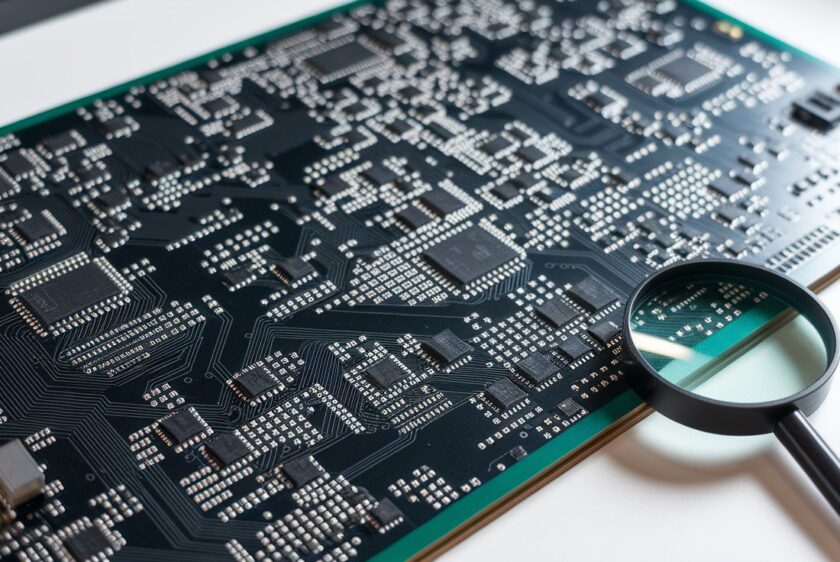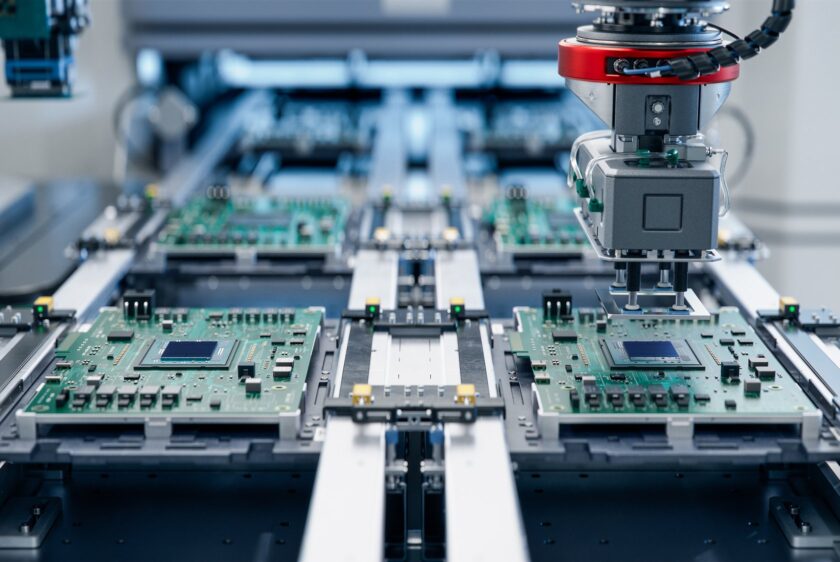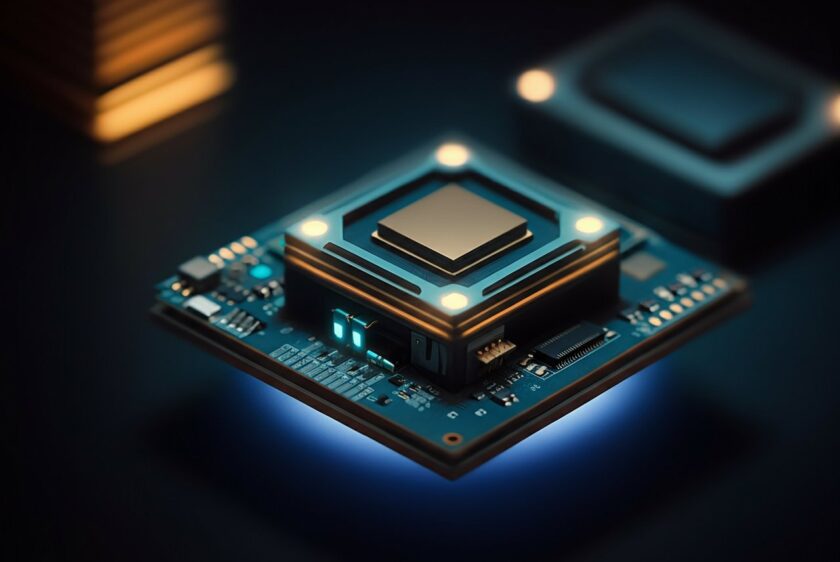
In the IoT space, no two products are exactly alike—but they all demand the same thing from their manufacturing partner: flexibility without failure.
Whether you're building sensor networks, smart wearables, medical IoT, or rugged industrial gateways, your product likely involves small-to-mid volume runs, evolving designs, complex assemblies, and stringent compliance. This is especially true in various industries such as healthcare, aerospace, and beyond.
Many EMS (Electronics Manufacturing Services) providers fall short because they’re either built for high-volume commercial runs or are too small to scale, certify, or support design evolution. The result? Production stalls, cost overruns, and regulatory risk. This guide helps engineering, sourcing, and operations teams evaluate EMS partners specifically for high-mix IoT manufacturing and avoid the common missteps that derail product timelines or quality.
Why High-Mix IoT Requires a Different Kind of EMS Partner
IoT devices introduce a unique mix of variables not typically seen in consumer or enterprise electronics:
- Small-batch, high-variation builds
- Mixed-technology PCBs (SMT, THT, flex, RF)
- Precision enclosure and mechanical fit
- Firmware-programmed microcontrollers
- Strict compliance (FDA, ISO 13485, FCC, ITAR)
- RF tuning, shielding, and wireless integration
- Frequent design revisions and prototyping cycles
This complexity demands a manufacturing partner who can flex across changeovers, manage detailed traceability, and offer engineering-guided support—without sacrificing build consistency.
Step 1: Define Your Technical and Regulatory Profile
Start with a detailed self-assessment. You can’t filter for the right EMS partner until you understand your own complexity, including your product range and compliance needs.
| Dimension | Questions to Clarify |
|---|---|
| Build Type | SMT only? Any THT, RF modules, flex/rigid-flex? |
| Volume Forecast | Pilot builds? Ongoing low-volume? Scaling over time? |
| Compliance | FCC, FDA, ISO 13485, ITAR, RoHS? |
| Enclosure Fit | Tight mechanical tolerance? Custom housing? |
| Power Profile | Battery management? Power-saving modes? |
| Firmware | On-board programming? Versioning? Functional test? |
| RF Integration | Bluetooth, LoRa, cellular, Wi-Fi, GNSS? Signal isolation needed? |
Understanding this profile enables better RFQs and deeper partner alignment from day one.
Step 2: Filter for High-Mix Manufacturing Maturity
Not all EMS providers are built for high-mix, low-volume (HMLV) work.
Ask:
- Do you manage multiple BOMs per day or per line?
- How do you document and implement engineering changes?
- Can you support prototype-to-production under one roof?
Key indicators of high-mix readiness:
- Batch-size-of-one production cells
- Digital travelers with revision control
- Seamless changeover workflows
- Hybrid builds (e.g., SMT + THT + RF + manual)
- Track record in IoT, MedTech, or aerospace electronics
If a prospective partner needs to "check with operations" on how they handle changeovers, they’re likely not high-mix ready.
Step 3: Evaluate NPI and Prototype Support
IoT products almost never go from CAD to mass production in a single step. You’ll need rapid prototyping and fast ECO cycles.
Look for:
- Turnaround under 10 business days for first articles
- Design for Manufacturability (DFM) feedback early in the process
- Engineering support to catch layout or sourcing issues
- Support for pilot runs and ramp scaling
- Functional test development and fixture support
A strong EMS will identify risks, not just execute the BOM. That means fewer respins and faster launch velocity.
Step 4: Confirm Compliance and Traceability Infrastructure
Many IoT applications—especially in medical, industrial, and defense spaces—require documented compliance from the first build.
Minimum standards to expect:
- ISO 9001 for quality
- ISO 13485 for MedTech
- ITAR for defense-sensitive builds
- RoHS/REACH tracking for global distribution
- Full serialization and unit traceability
- Audit trail for test, assembly, and inspection
Ask to see traveler samples, CAPA logs, and first-pass yield reports. Compliance is not just certificates—it’s the system behind them.
Step 5: Assess Testing and Firmware Services
Most IoT devices rely on functional logic, microcontrollers, or wireless systems that must be tested—not just assembled.
Expect:
- On-site firmware flashing and verification
- Functional test (FCT) tied to real-world use cases
- In-circuit test (ICT) when needed for tight specs
- RF testing (VSWR, shielding, antenna matching)
- Post-assembly inspection under power and load
Test capabilities are the last line of defense before field failures. If your EMS doesn’t have it in-house, you’ll need a secondary vendor—and more time.
Step 6: Evaluate RF and Connectivity Expertise
If your product involves Bluetooth, Wi-Fi, LoRa, GNSS, or cellular—ask specifically about RF assembly and validation.
Key questions:
- Can you handle embedded antennas without detuning?
- Do you offer RF chamber testing or validation?
- How do you isolate noise during placement and reflow?
- Can you integrate RF modules into metal or sealed enclosures without compromising performance?
RF mistakes often pass visual inspection—only to fail FCC or degrade signal in the field. Choose a partner that understands wireless design—not just placement.
Step 7: Review Sourcing Strategy and Supply Chain Resilience
IoT BOMs are notorious for having long-tail components, obsolete parts, or niche modules.
Ask:
- How do you flag at-risk parts or long lead items?
- Can you recommend alternates that preserve performance and compliance?
- Do you manage turnkey procurement, or require consigned parts?
- How do you validate parts from secondary sources?
Component availability can delay entire programs. A proactive supply chain partner helps you mitigate risk before production begins.
Step 8: Prioritize Communication and Proximity
Agile IoT programs require real-time engagement—not long email chains or timezone delays.
Look for:
- U.S.-based manufacturing for tighter IP control and logistics, perhaps considering major hubs like California or Texas for proximity
- Direct access to engineering and program management
- Real-time dashboards, yield data, and production updates
- Same-day issue response and weekly production calls
Faster communication = faster design changes, fewer errors, and faster time to market.
Case Snapshots: What Good IoT EMS Looks Like
Case 1: Rugged Industrial Gateway (Low-Volume)
- RF, cellular, and Wi-Fi modules
- Field-upgradable firmware
- Ingress-sealed, coated assembly
Delivered: - DFM support and pilot scaling
- Custom fixture and test scripting
- 56% lead time reduction in 3 months
Case 2: MedTech Wearable (ISO 13485 Build)
- Flex PCB, silicone integration
- FDA-tracked device with power optimization
Delivered: - Laser depaneling + silicone bonding
- Custom serialization and audit-ready DHR
- Passed FDA audit with zero findings
Final Checklist: Key EMS Capabilities for High-Mix IoT
| Dimension | Questions to Clarify |
|---|---|
| Build Type | SMT only? Any THT, RF modules, flex/rigid-flex? |
| Volume Forecast | Pilot builds? Ongoing low-volume? Scaling over time? |
| Compliance | FCC, FDA, ISO 13485, ITAR, RoHS? |
| Enclosure Fit | Tight mechanical tolerance? Custom housing? |
| Power Profile | Battery management? Power-saving modes? |
| Firmware | On-board programming? Versioning? Functional test? |
| RF Integration | Bluetooth, LoRa, cellular, Wi-Fi, GNSS? Signal isolation needed? |
[Table] [Horizontal Rule]
Final Word: Don’t Just Choose a Vendor—Choose a Partner
The best EMS providers for high-mix IoT aren’t just capable—they’re collaborative. They think like engineers, communicate like teammates, and operate like part of your launch team. Whether you’re building an industrial sensor or a Bluetooth-enabled wearable, choose a manufacturing partner that can:
- Adapt to complexity
- Navigate compliance
- Own quality
- Scale with you
At EST, we don’t just build IoT electronics. We de-risk, accelerate, and support every stage of your innovation with a comprehensive product range and supplier network, from IoT technologies to connectivity solutions.








